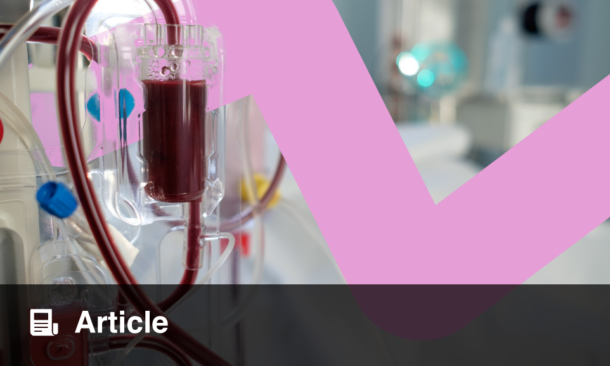*Margot Vanfleteren
Young Leader in Diabetes; Lions Young Ambassador 21st Century Award; Student Health Sciences, Maastricht University, Maastricht, Netherlands
*Correspondence to [email protected]
Diabetes is a non-communicable disease (NCD) meaning that it often cannot be seen. After 20 years of living with Type 1 diabetes I am lucky to have no complications apart from some necrobioses on my legs, but diabetes, like other NCDs, has affected my body in a variety of ways. I have lipodystrophy which causes lumps; due to the many years of injecting insulin and checking my blood glucose levels, my fingers have hardened skin; my legs and stomach are blue and red from regularly injecting insulin. Moreover, managing weight with diabetes is more challenging. I was diagnosed with Type 1 diabetes at 2 years of age. Going through puberty has not been easy. I have an insulin pump and use the continuous glucose monitoring feature (CGM) to monitor my blood glucose closely. This is clear for anyone to see, yet when it is summer I prefer to wear t-shirts or dresses. When people see me walking or playing sport this is what they see as different. Today a person looked thoroughly at my CGM. I don’t mind people doing that but I would prefer people to ask me what it is instead of staring. Yes, these things do make me feel insecure sometimes, but as long as my diabetes does not limit me I am completely fine with the less fun parts of my diabetes. After all, diabetes has taught me important lessons, such as the one to stay true to yourself and to do what makes you happiest as a person despite other people’s judgment.
These insecurities regarding my own body, the necessary close insulin management, and the judgment of strangers are factors in the development of diabulimia. Diabulimia, freely defined, is an eating disorder (ED) in which people with diabetes control weight gain by restricting their insulin intake. Luckily I have never been prone to do so. Diabulimia raises the risk of developing complications tremendously, yet I want to be straight forward and admit that my weight has been a struggle since the diagnosis at age 2, and most importantly I wish to underline that this subject has been poorly discussed during 20 years of hospital consultations for my diabetes management. A rough estimate of the number of times a healthcare professional discussed body image is six. For something that is constantly on your mind I find this an awfully low number. The reason I am opening up on this subject in a widely read journal is because I feel that this brings awareness of EDs and could therefore improve the situation of people battling EDs.
Diabulimia is a word derived from diabetes and bulimia. One in six males with diabetes suffer from diabulimia, and one in three females.1 Diabetes is a chronic disease, in which the body is unable to use blood glucose as an energy source which results in hyperglycaemia. Bulimia is an eating disorder in which a person loses control of food intake, resulting in excessive calorie intake; in order not to gain weight the individual purges the food.1 The coincidence of bulimia and diabetes is called an ED not otherwise specified as it does not fully fit into one of the proposed ED models such as anorexia nervosa or bulimia nervosa in the diagnostic and statistical manual of psychiatry.2
People with Type 1 diabetes are more prone to developing an ED as the focus of diabetes treatment is mainly on food intake and its relation to insulin. Moreover, incidence of Type 1 diabetes peaks at puberty, just like EDs. The obligation of patients living with Type 1 diabetes to closely monitor food intake starting from diagnosis is an extra factor in the development of an ED in this crucial period for psychological development, and certainly for body image. The mix of an ED and diabetes makes treatment more difficult.3
As I have been living with diabetes for this long, I have established a broad network of people living with diabetes. The beauty of this network is the ability is to share stories and to support each other when one of us is having a down day in our diabetes journey. Due to a personal match you sometimes get closer to people in the diabetes community. As the knowledge of diabulimia in the diabetes online community increased, I became more and more aware that various people in our community struggle with weight and body image. The stories I hear and read from people on their road to recovery are hopeful but also shocking. The time it can take to openly discuss their psychological battle with weight and insulin management with their healthcare professional is long in my opinion, and for healthcare professionals I feel it is challenging to notice diabulimia in people with Type 1 diabetes if they are not aware of the tell-tale signs. Research on diabulimia is not widely available. I invite you to search the term ‘diabulimia’ or ‘eating disorder diabetes’ on pubmed.
With this blog I wish to reinforce the importance of the inclusion of screening for EDs in people living with diabetes. Inclusion of diabulimia in the diagnostic and statistical manual of psychiatry would be another great step forward. I have encountered plenty of healthcare professionals who are not aware of the existence of diabetes-related EDs. This worsens the situation for people with this disorder. Moreover, for healthcare teams aware of diabulimia it is often challenging to find the right approach to balance the treatment of diabetes and an ED when prevalent.
Let us move forward together and relieve people with diabetes in their battle against diabulimia by openly discussing this subject and supporting each other with knowledge.
References
- Bächle C et al. Disordered eating and insulin restriction in youths receiving intensified insulin treatment: Results from a nationwide population-based study. Int J Eat Disord. 2016;49(2):191-6.
- American Psychiatric Association, “Diagnostic and Statistical Manual of Mental Disorders,” 5th edition (2013), Arlington, Virginia: American Psychiatric Publishing.
- Larrañaga A et al. Disordered eating behaviors in type 1 diabetic patients. World J Diabetes. 2011;2(11):189-95.
All information obtained by European Medical Journal and each of the contributions from various sources is as current and accurate as possible. However, due to human or mechanical errors, European Medical Journal and the contributors cannot guarantee the accuracy, adequacy, or completeness of any information, and cannot be held responsible for any errors or omissions. European Medical Journal is completely independent of this blog piece, views and opinions expressed are those of the authors.







